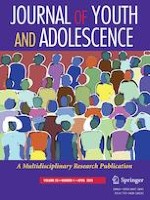28-11-2023 | Empirical Research
What Fosters School Connectedness? The Roles of Classroom Interactions and Parental Support
Gepubliceerd in: Journal of Youth and Adolescence | Uitgave 4/2024
Log in om toegang te krijgenAbstract
Although research has identified the impact of school connectedness on a variety of outcomes for adolescents, much less work has focused on identifying its precursors. This study examined the relative influences of classroom interactions and parental support on elements of school connectedness among a sample of 4838 students (Mage = 15.84, SD = 0.29; 49.1% female) in the United States from the Programme for International Student Assessment (PISA) 2018 data. The results showed that three domains of classroom interactions (i.e., classroom management, instructional support, and emotional support) and parental support played unique roles in predicting school connectedness (i.e., teacher support and school belonging). Specifically, classroom management positively predicted both teacher support and school belonging; instructional support, especially directed instruction, positively predicted teacher support; emotional support was unrelated to teacher support and school belonging. Parental support positively predicted school belonging, but not teacher support. Overall, these findings highlight the roles of both teachers and parents in providing developmentally appropriate support to facilitate school connectedness.
